Paella Vegetables: From Bland to Brilliant – A Vibrant Veggie Guide for Perfect Paellas!
Table of Contents
- Introduction
- What Makes a Vegetable 'Paella-Ready'?
- Top 7 Vegetables That Make Paella Sing
- How to Choose the Best Paella Vegetables
- Prep Like a Pro: How to Cut and Cook Paella Veggies
- Buying Guide: Where to Get the Best Ingredients
- Pairing Vegetables with Proteins and Spices
- Conclusion
Introduction
If you’ve ever taken a bite of a beautifully cooked paella and wondered why yours just doesn’t taste as vibrant or balanced, you’re not alone. One of the most underrated secrets to an unforgettable paella lies not in the rice or the saffron—but in the vegetables. Choosing the right paella vegetables can transform your dish from "just okay" to "I-need-that-recipe!".
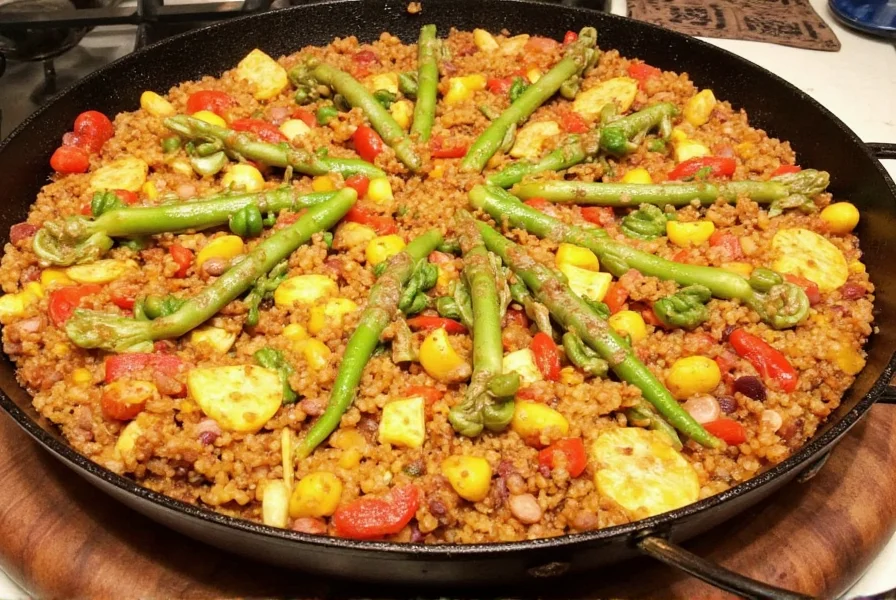
In this guide, we’ll walk you through the essential veggies that give paella its signature depth of flavor, color, and texture. Whether you're cooking for a crowd or enjoying a quiet dinner for two, this list will help you make smarter, tastier choices at the market and in the kitchen.
What Makes a Vegetable 'Paella-Ready'?
Paella is more than just rice—it’s a harmonious blend of ingredients that complement each other without overpowering the delicate balance of spices like saffron and smoked paprika. So what makes a vegetable perfect for paella?
- Bright Color: Adds visual appeal and indicates high nutrient content.
- Firm Texture: Holds up during long cooking times without turning mushy.
- Earthy or Sweet Flavor Notes: Complements seafood, chicken, and smoky flavors commonly found in paella.
- Versatility: Works well whether roasted, simmered, or sautéed.
Now let’s dive into the top contenders that should be in your next paella lineup.
Top 7 Vegetables That Make Paella Sing
Here's a quick list of the MVPs (Most Valuable Produce) in any authentic paella recipe:
| Vegetable | Flavor Profile | Texture | Best Use in Paella |
|---|---|---|---|
| Red Bell Pepper | Sweet, slightly smoky | Crisp but softens when cooked | Adds brightness and color contrast |
| Green Beans | Grassy, fresh | Crisp-tender | Traditional in some regional paellas |
| Artichoke Hearts | Mild, nutty | Tender yet firm | Unique texture and gourmet touch |
| Tomatoes | Acidic, fruity | Soft, juicy | Base for rich sofrito sauce |
| Pimientos de Padrón | Mostly mild with occasional heat | Thin-skinned, crisp | Garnish or side accompaniment |
| Escarole or Endive | Bitter-sweet | Crunchy leaves | Adds freshness post-cooking |
| Zucchini | Mild, earthy | Soft, creamy when cooked | Great for absorbing paella broth |
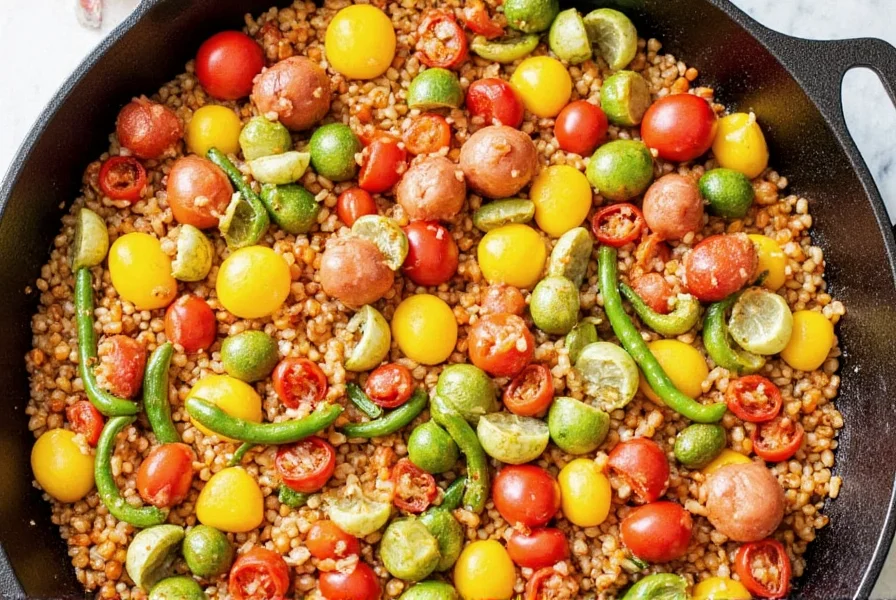
Why These Veggies Work So Well
- Color Contrast: Bright reds, greens, and yellows make paella visually stunning.
- Flavor Balance: Sweet, bitter, and acidic notes keep the palate interested.
- Textural Diversity: Crisp, tender, and creamy textures create a layered experience.
How to Choose the Best Paella Vegetables
Selecting quality produce is half the battle. Here’s how to spot the stars at your local market or grocery store:
Pro Tips for Buying Paella Vegetables
- Look for firmness: Avoid soft spots, wrinkles, or excessive moisture.
- Sniff it out: Vegetables should smell fresh—no musty or sour odors.
- Buy seasonal: Seasonal produce is fresher, tastier, and often cheaper.
- Avoid overripe tomatoes: For paella, you want tomatoes that hold their shape and add body to the sofrito.
- Check zucchini ends: They should be moist and slightly sticky—not dry or cracked.
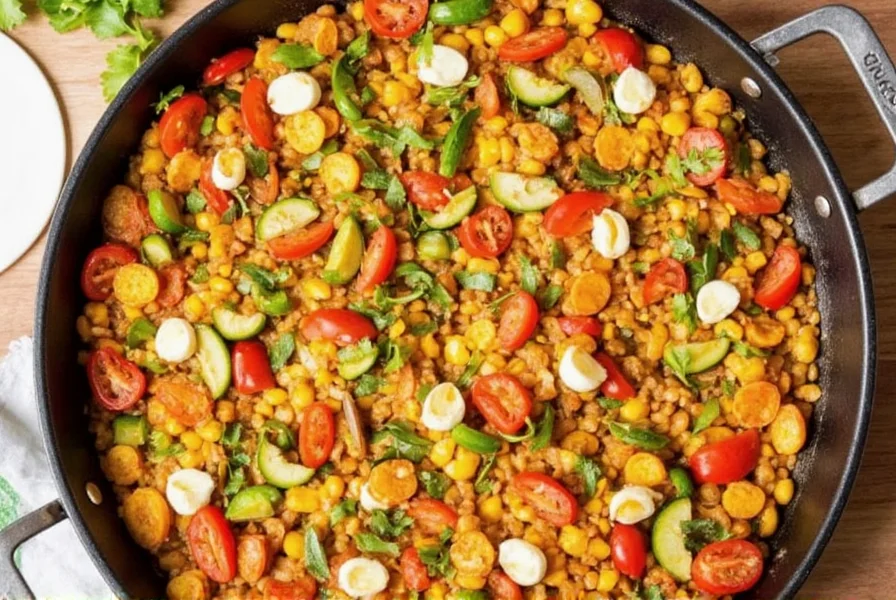
When in Doubt, Ask the Farmer
If you're shopping at a farmer's market, ask vendors about peak seasons and which varieties they recommend for cooking. Some heirloom tomatoes, for instance, are better for sauces than others—and the same goes for peppers and squash.
Prep Like a Pro: How to Cut and Cook Paella Veggies
How you cut and cook your vegetables affects both flavor and presentation. Here's a breakdown:
| Vegetable | Cutting Style | Cooking Method | Pro Tip |
|---|---|---|---|
| Red Bell Pepper | Sliced into thin strips | Roasted or sautéed first | Peel after roasting for smoother texture |
| Green Beans | Trimmed and cut into 2-inch pieces | Blanched or added whole to the pan | Don’t overcook—keep some crunch |
| Artichoke Hearts | Quartered or halved | Sautéed before adding to the rice | Lemon water prevents browning |
| Tomatoes | Diced or grated | Cooked into sofrito base | Add sugar if using under-ripe tomatoes |
| Zucchini | Sliced into half-moons | Seared first, then added to rice | Salt and drain excess water beforehand |
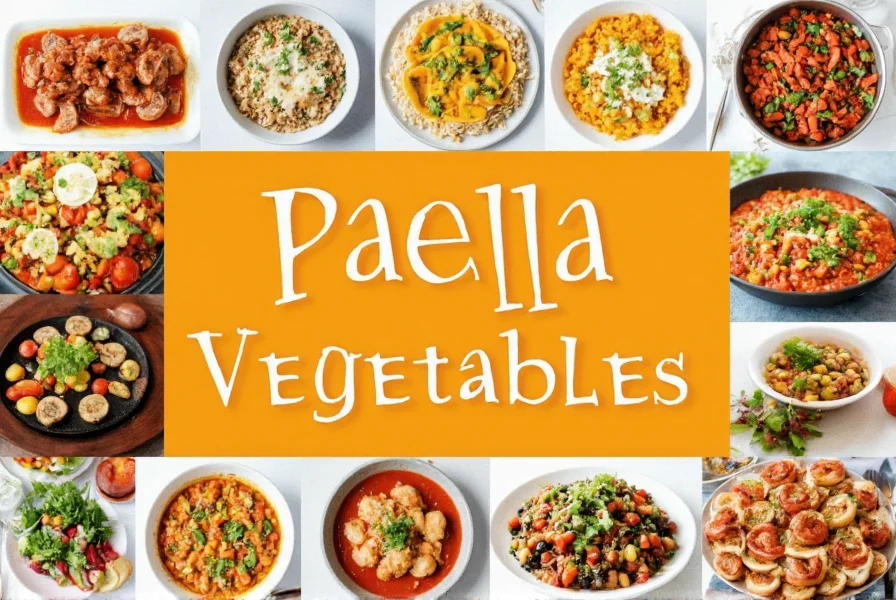
The Sofrito Secret
At the heart of any great paella is a good sofrito—a mixture of slowly sautéed onions, garlic, and tomatoes until sweet and caramelized. This base sets the tone for the entire dish, so don’t rush it.
Buying Guide: Where to Get the Best Ingredients
Whether you're making vegetarian paella or a classic Valencian version with rabbit and chicken, sourcing the right vegetables matters. Here are some top options for buying paella-ready produce:
1. Local Farmer’s Markets
- Pros: Fresh, seasonal, locally grown, often organic.
- Cons: Limited selection unless near major farms.
2. Organic Grocery Chains (e.g., Whole Foods, Sprouts)
- Pros: High-quality, traceable sources, often ethically farmed.
- Cons: More expensive than conventional stores.
3. International Markets
- Pros: Specialty items like piquillo peppers, artichokes, and exotic herbs.
- Cons: Can vary in freshness depending on turnover rate.
4. Online Grocers (e.g., Amazon Fresh, Instacart, Thrive Market)
- Pros: Delivery straight to your door; curated organic and specialty options.
- Cons: Higher cost and limited control over produce quality.
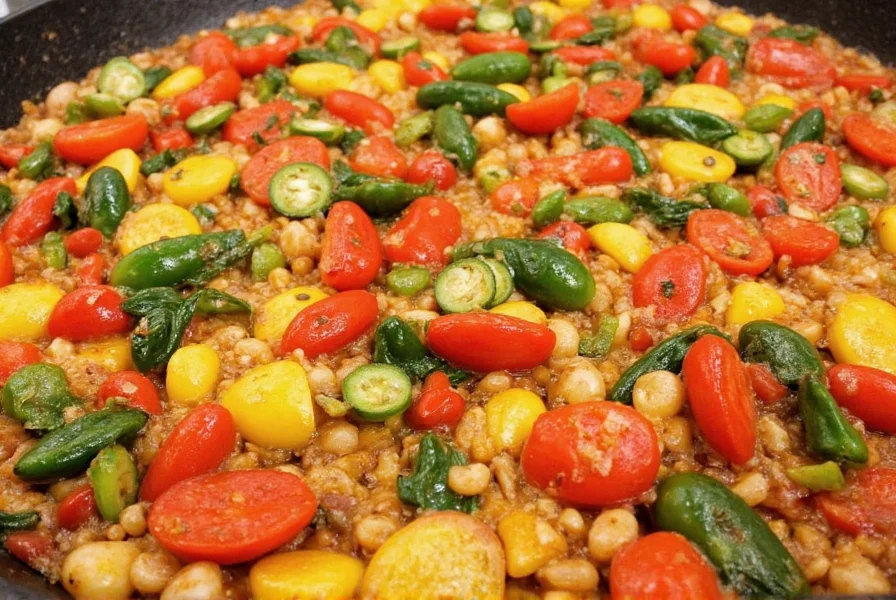
Recommended Products
- Organic Valencia Tomatoes: Perfect for a sweeter, richer sofrito.
- Spanish Artichoke Hearts in Olive Oil: Save prep time while keeping authentic flavor.
- Heirloom Red Bell Peppers: Juicy, naturally sweet, and beautiful.
Pairing Vegetables with Proteins and Spices
One of the joys of paella is experimenting with different combinations. Let’s explore how various vegetables play off common proteins and spices:
Seafood Paella
- Best Veggies: Zucchini, red peppers, artichokes
- Spice Match: Saffron, smoked paprika, parsley
Vegetarian Paella
- Best Veggies: Green beans, escarole, tomatoes, peas
- Spice Match: Smoked paprika, turmeric (as a saffron substitute), garlic powder
Chicken & Rabbit Paella
- Best Veggies: Peppers, tomatoes, artichokes, carrots
- Spice Match: Saffron, rosemary, bay leaf, pimentón
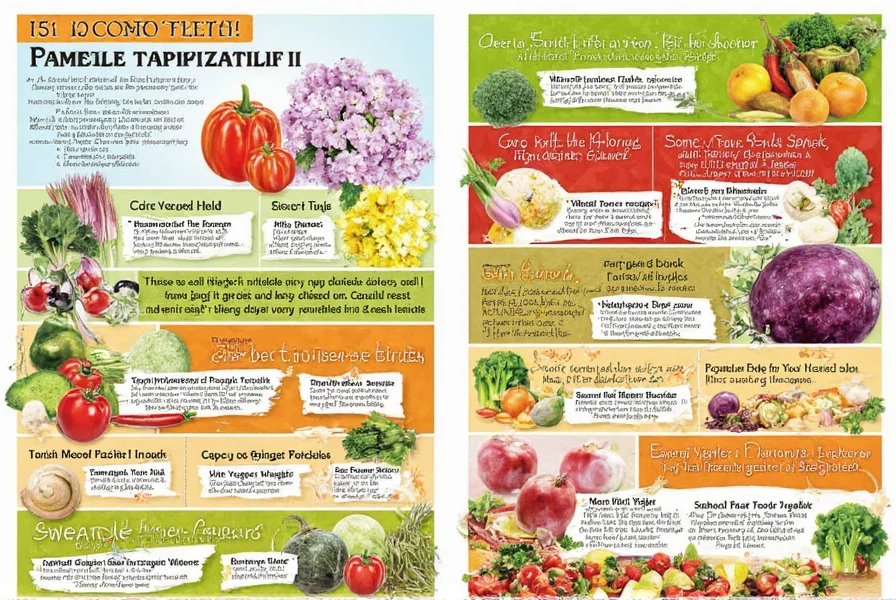
Conclusion
The magic of paella lies not only in its golden rice or saffron threads but in the humble vegetables that bring harmony to every spoonful. By choosing the right paella vegetables and preparing them thoughtfully, you can elevate your dish from ordinary to extraordinary.
Remember: paella is a canvas. Play with colors, textures, and flavors. Try new combinations, experiment with seasonal produce, and most importantly—have fun with it!
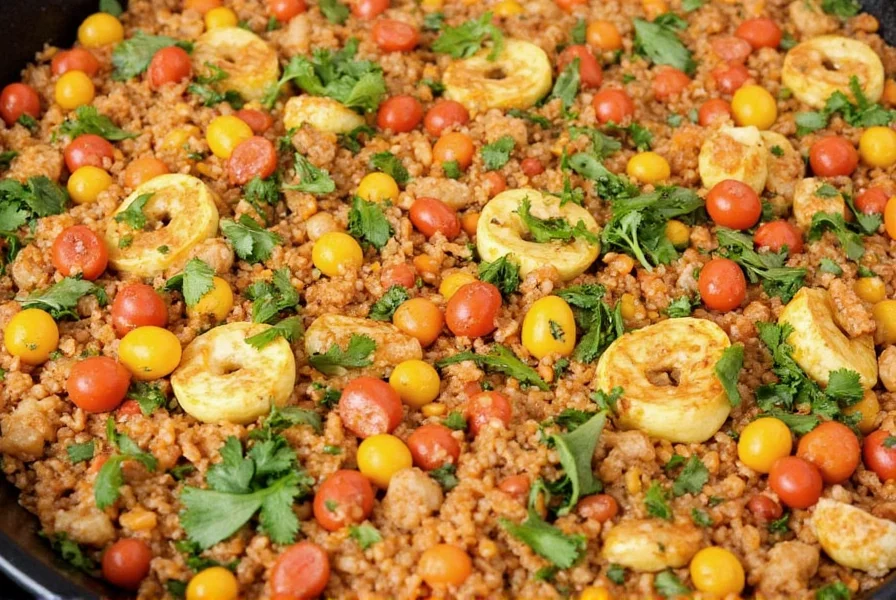
Happy cooking—and may your paella always be perfectly seasoned and vibrantly colorful!

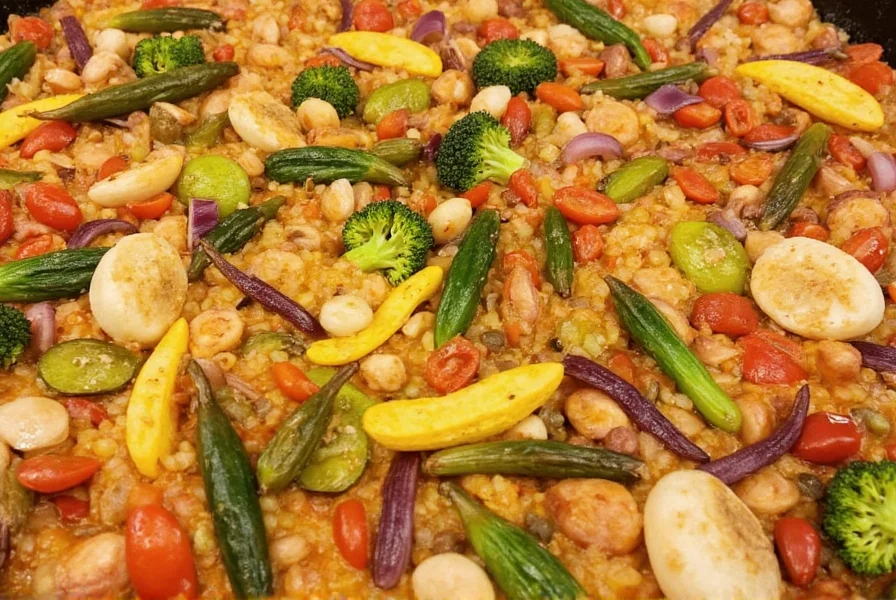









 浙公网安备
33010002000092号
浙公网安备
33010002000092号 浙B2-20120091-4
浙B2-20120091-4